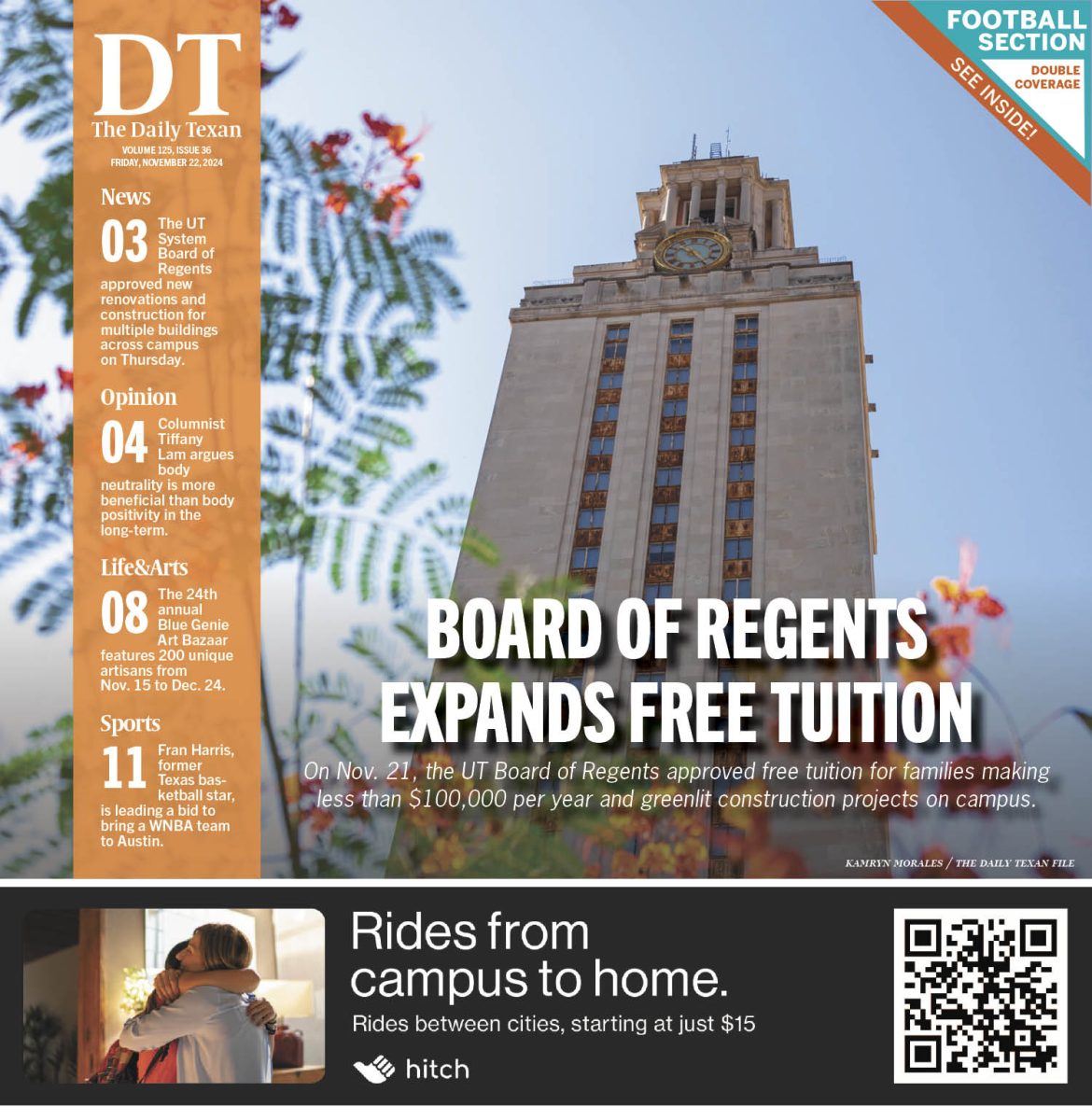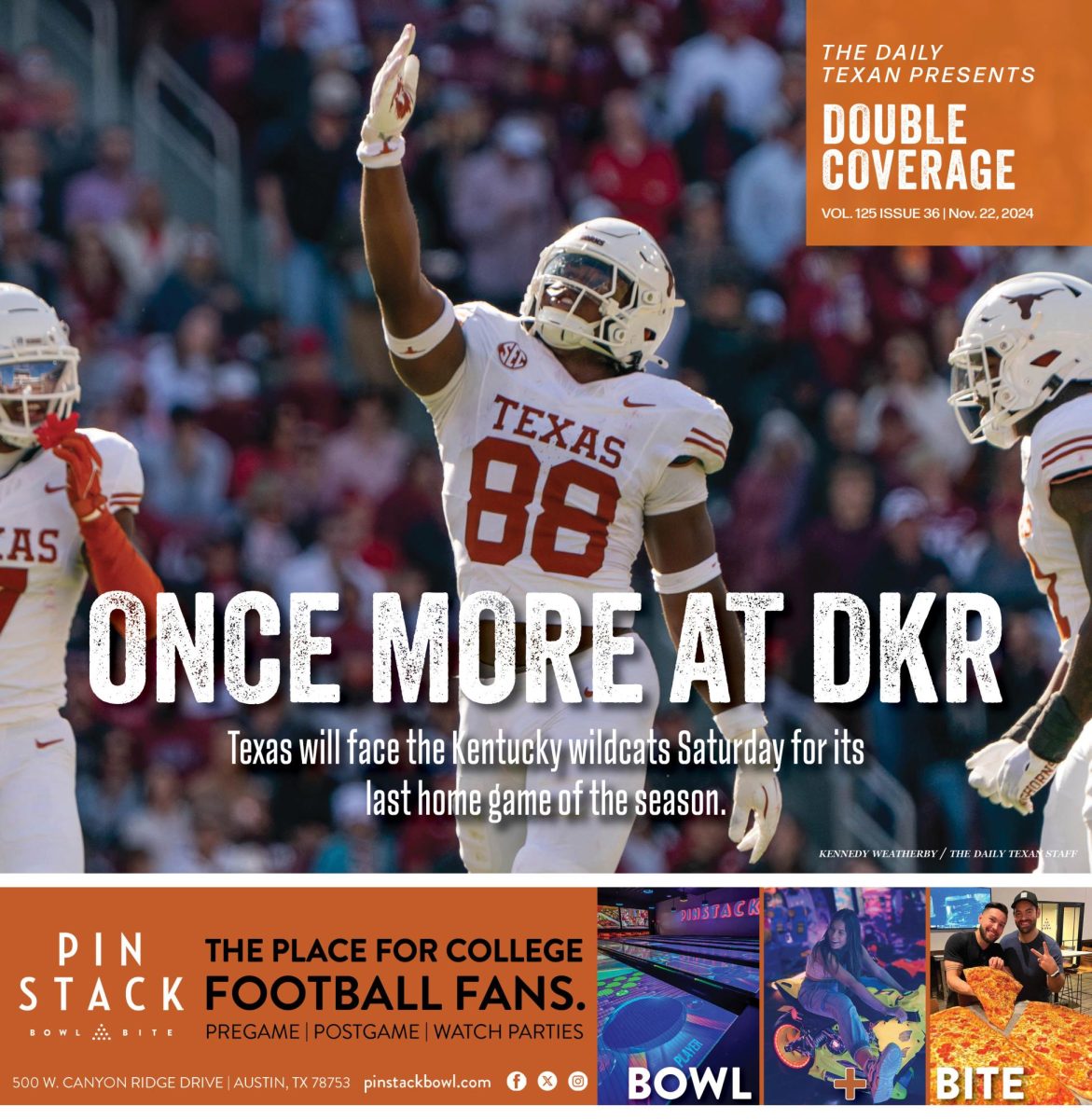Large classes need modification
April 16, 2023
The academic environment in large class sizes hinders the quality of education, and professors should be mindful and accommodating of this problem. Hundreds of students pack tightly into the rows of seats in an auditorium-style lecture hall as a professor speaks on stage. Classes with this setup are a common fixture at UT.
Coming from a graduating high school class of 120 students, I was not accustomed to UT’s large class sizes. As a business and Plan II major, I’ve taken a mix of larger classes like BA 101 and smaller classes like World Literature. I’ve quickly noticed a discrepancy in my peers’ learning experiences in UT’s large, lecture-based classes versus its small, discussion-based classes.
UT professors should restructure larger classes to improve students’ academic experiences.
Students in larger classes are often distracted by the seating arrangements. Being tightly packed into rows limits students’ eye contact with others, and the room’s size also physically distances students from the professor.
Business and Plan II freshman, Julia Rae, shares her thoughts on how differing seating arrangements due to class size impact her relationships with students and professors.
“I think that (it’s easier to connect with your peers and professors) especially when you’re all seated at the same table, as opposed to kind of in like stadium rows,” Rae said. “I think that definitely allows for you to more easily talk to them and get to know them better.”
Furthermore, the sheer number of students in large classes inhibits deeper connections and individual interactions with professors. Students also have less opportunity to participate in class discussions due to the non-interactive formats.
To promote student engagement, professors should adopt a more collaborative, discussion-based teaching style that incorporates small-group interactions. Dividing students into smaller groups would encourage them to apply the knowledge they learn from lectures and assignments, formulate their own perspectives and better retain information.
Business and Plan II freshman, Vivian Dai, explained how she feels a lack of connection with her professors and fellow students in large classes.
“There’s like 200 people, and there’s only one professor,” Dai said. “It’s really hard to even talk to everyone in the class. And I don’t really know who my professors are besides, I know their name, and I know they teach a class, but I don’t know much about them. They definitely don’t know who I am.”
A potential solution to mitigate this disconnect is to offer short one-on-one meetings. Last semester, I had a professor who scheduled 5-to-10-minute meetings with each student at least once. The meetings offered students the chance to personally know the professor, raise questions, or give face-to-face feedback — creating a sense of unity within the class.
Although carrying out one-on-one meetings may be time-consuming, finding a way to develop connections between professors and students is necessary to help support student learning.
Associate Vice Chancellor for Academic Affairs Rebecca Karoff works with faculty in the UT System Administration to implement teaching techniques that facilitate students’ success. She discussed how adopting a hybrid learning model and flipped classroom could improve student engagement in large classes.
“When we’re together in the classroom, we’re going to try to be interactive, even if it’s a large group of us, whereas when you’re (on your own), you can go watch the lecture I’ve recorded. You don’t need to be in the classroom together to do that.”
Fang is a business and Plan II freshman from Plano, Texas.









